Search results for swami sivananda (19)
SWAMI SIVANANDA – YOGA IN DAILY LIFE
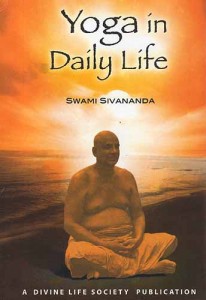
> BOOK: „YOGA IN DAILY LIFE“ <
> SWAMI SIVANANDA FREE BOOKS <
Swami Sivananda Saraswati (September 8, 1887—July 14, 1963) was a Hindu spiritual teacher and a well known proponent of Sivananda Yoga and Vedanta. Sivananda was born Kuppuswami in Pattamadai, in the Tirunelveli district of Tamil Nadu. He studied medicine and served in Malaya as a physician for several years before taking up monasticism. He lived most of the later part of his life near Muni Ki Reti, Rishikesh. He is the founder of The Divine Life Society (1936), Yoga-Vedanta Forest Academy (1948) and author of over 200 books on yoga, vedanta and a variety of other subjects. He established Sivananda Ashram, the location of the headquarters of The Divine Life Society (DLS), on the bank of the Ganges at Shivanandanagar, at a distance of 3 kilometres from Rishikesh. Sivananda Yoga, the yoga form propagated by him, are now spread in many parts of the world through Sivananda Yoga Vedanta Centres, but these centres are not affiliated with Swami Sivananda’s original ashrams which are run by the Divine Life Society. Read more: > HERE <
About the Author: Born on the 8th September, 1887, in the illustrious family of Saga Appayya Diskhita and several other renowned saints and savants, Sri Swami Sivananda had a natural flair for a life devoted to the study and practice of Vedanta.
Added to this was an inborn eagerness to serve all and an innate feeling of unity with all mankind. His passion for service drew him to the medical career; and soon he gravitated to where he thought that his service was most needed. Malaya claimed him. He had earlier been editing a Health Journal and wrote extensively on health problems. He discovered that people needed right knowledge most of all; dissemination of that knowledge he espoused as his own mission. It was divine dispensation and the blessing of God upon mankind that the doctor of body and mind renounced his career and took to a life of renunciation to qualify himself for ministering to the soul of man. He settled down at Rishikesh in 1924, practiced intense austerities and shone as a great Yogi, Saint, Sage and Jivanmukta. I
In 1932 he started the Sivanandashram. In 1936 was born The Divine Life Society. In 1948 the Yoga-Vedanta Forest Academy was organized. Dissemination of spiritual knowledge and training of people in Yoga and Vedanta were their aim and object. In 1950 he undertook a lightning tour of India and Ceylon.
In 1953 he convened a ‚World Parliament Religions‘. He is the author of over 300 volumes and has disciples all over the world, belonging to all nationalities, religions and creeds. To read his works is to drink at the fountain of Wisdom Supreme. On 14th July, 1963 he entered Mahasamadhi.
Publishers‘ Note: That this book has already run into eight editions is in itself the best tribute that can be paid to this, one of the first books written by Sri Swamiji Maharaj. About the book and its author, we cannot do better than to quote from the Publisher’s Note to the first edition of this book, in which Sri Em. Airi Writes:
“ His Holiness Sri Swami Sivananda Saraswati needs scarcely and introduction to the vast multitudes of reading public that pants for spiritual unfoldment and Self-Realisation“
The revered Yogi belongs to the ages and ranks amongst the blessed souls who have had the good fortune to taste the Nectar of Cosmic Consciousness. In clear, simple and impressive style the Swami addresses the young and yet inexperienced spiritual aspirants and lays down before them the fundamentals of spirituality and the various means essentially requisite for Divine Wisdom.“
„This book is a message from the great Yogi of the Himalayas to the helpless and bewildered seeker of Truth. This inspiring and soul-stirring little volume will, we venture to say, undoubtedly contribute its mite to the moral and spiritual perfection of the human race in general and the aspirants in particular. As we wish to present this volume in a popular and a presentable style, it is printed on good paper and got up excellently well. If this book appeals to the broad-minded and expanded hearts amongst the religious reformers and also aspirants, the Publishers‘ labours will have been sufficiently recompensed.“
We reiterate Sri Airi’s pious with as we offer this priceless treasure to the blessed aspirant-world.—THE DIVINE LIFE SOCIETY
SERVE, LOVE, GIVE, PURIFY
MEDITATE, REALISE
So Says Sri Swami Sivananda
Saraswati Maharaj
- Swami Sivananda – Selfless Service <
- Articles on Swami Sivananda, Ayurveda <
- Meet Swami Sivananda, studies, friends, fans at fb <
- Meet Council for a Parliament of the World’s Religions (CPWR) at fb <
Ayurveda – H.H. Swami Sivananda Maharaj
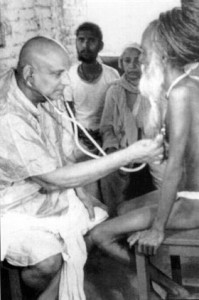
( H.H. Swami Sivananda Saraswati Maharaj )
> SIVANANDA – PRACTICE OF AYURVEDA <
Swami Sivananda Saraswati (September 8, 1887—July 14, 1963) was a Hindu spiritual teacher and a well known proponent of Sivananda Yoga and Vedanta. Sivananda was born Kuppuswami in Pattamadai, in the Tirunelveli district of Tamil Nadu. He studied medicine and served in Malaya as a physician for several years before taking up monasticism. He lived most of the later part of his life near Muni Ki Reti, Rishikesh. He is the founder of The Divine Life Society (1936), Yoga-Vedanta Forest Academy (1948) and author of over 200 books on yoga, vedanta and a variety of other subjects. He established Sivananda Ashram, the location of the headquarters of The Divine Life Society (DLS), on the bank of the Ganges at Shivanandanagar, at a distance of 3 kilometres from Rishikesh.
Sivananda Yoga, the yoga form propagated by him, are now spread in many parts of the world through Sivananda Yoga Vedanta Centres, but these centres are not affiliated with Swami Sivananda’s original ashrams which are run by the Divine Life Society. Read more: > HERE <
Sri Swami Sivanandaji Maharaj was a healer of the body in his Purvashram (before he entered the Holy Order of Sannyasa). He was a born healer, with an extraordinary inborn love to serve humanity; that is why he chose the medical profession as a career. That is why he edited and published a health Journal „Ambrosia“. That is why he went over to Malaya to serve the poor in the plantations there. And, strangely enough, that is why, he renounced the world and embraced the Holy Order of Sannyasa.
He was a healer of the body and the soul. This truth is reflected in the Ashram which he has established in Rishikesh. The huge hospital equipped with modern instruments was set up and the entire Ashram where all are welcome to get themselves healed of their heart’s sores and thoroughly refresh themselves in the divine atmosphere of the holy place.
SERVE, LOVE, GIVE, PURIFY
MEDITATE, REALISE
So Says Sri Swami Sivananda
Saraswati Maharaj
Sri Swamiji wanted that all systems of healing should flourish. He had equal love and admiration for all systems of healing. He wanted that the best of all the systems should be brought out and utilised in the service of Man. He has written a number of books on all aspects of Healing—from the Naturopathic and Allopathic points of view. This one dealing with Ayurveda is a valuable addition to the healer’s armamentarium.
Ayurveda is the Veda or knowledge of Ayus or life. It has been classified as the Fifth Veda.
Ayurveda is a distinct Veda. It is even superior to the other Vedas because it gives life which is the basis of all enjoyments, study, meditation and Yoga Sadhana.
Ayurveda is the science of life. It shows the way to remove diseases, to keep up sound health and attain longevity.
Ayurveda was in vogue in India since very early times. The Ayurvedic and Siddha systems have played a very important and vital part in the sphere of public health. Their popularity is due to their availability, cheapness and efficacy.
Here is a beautiful ideal of Charaka: „Not for self, not for the fulfilment of any earthly desire of gain, but solely for the good of suffering humanity should you treat your patients and so excel all. Those who sell the treatment of disease as merchandise gather the dust and neglect the gold.“
Charaka also says: „A physician who cannot enter into the innermost soul of the patient with the bright light of the lamp of his own knowledge cannot successfully treat any disease.“
India has ever been evolving art after art, science after science, as her contribution to the common heritage of all the nations of the world. Her greatest gift to the world is the gift of the spiritual science of Self-perfection. Next to it we should place this Science of Life, the Ayurveda, as a precious gift to be carefully developed and broadcast to all nations. It is a national duty of every Indian.
Nurse the Sick, Feed the Hungry, Clothe the naked, This is DIVINE LIFE.. …..Swami Sivananda
THE DIVINE LIFE SOCIETY
H.H. SWAMI SIVANANDA – SELFLESS SERVICE
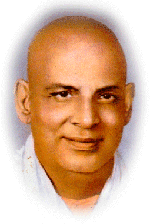
SERVE, LOVE, GIVE, PURIFY
MEDITATE, REALISE
SIVANANDA FREE BOOK DISTRIBUTION
“Serve, Love, Give, Purify, Meditate, Realize. Be Good, Do good; Be kind, Be compassionate. Always do good to others. Be selfless. Mentally remove everything and be free. This is divine life. This is the direct way to Moksha or salvation. ~Swami Sivananda
SWAMI SIVANANDA – FREE BOOK´s
SERVE, LOVE, GIVE, PURIFY
MEDITATE, REALISE
So Says Sri Swami Sivananda
Saraswati Maharaj
Swami Sivananda Saraswati (September 8, 1887—July 14, 1963) was a Hindu spiritual teacher and a well known proponent of Sivananda Yoga and Vedanta. Sivananda was born Kuppuswami in Pattamadai, in the Tirunelveli district of Tamil Nadu. He studied medicine and served in Malaya as a physician for several years before taking up monasticism. He lived most of the later part of his life near Muni Ki Reti, Rishikesh. He is the founder of The Divine Life Society (1936), Yoga-Vedanta Forest Academy (1948) and author of over 200 books on yoga, vedanta and a variety of other subjects. He established Sivananda Ashram, the location of the headquarters of The Divine Life Society (DLS), on the bank of the Ganges at Shivanandanagar, at a distance of 3 kilometres from Rishikesh. Sivananda Yoga, the yoga form propagated by him, are now spread in many parts of the world through Sivananda Yoga Vedanta Centres, but these centres are not affiliated with Swami Sivananda’s original ashrams which are run by the Divine Life Society. Read more: > HERE <
Nurse the Sick, Feed the Hungry, Clothe the naked, This is DIVINE LIFE..
…..Swami Sivananda
Swami Sivananda, one of the greatest Spiritual masters of the 20th century, he is famous for his teachings, his books, his medical missions and so much more. He was also a great master of Yoga. Sadly most people in the west just equate Him with yoga, only a few know he was so much more than this.
His Early Life
Born in 1887 in Pattamadai, Tamil Nadu, South India, Swami Sivananda whose name was then Kuppuswami, was a brilliant boy at studying as well as gymnastics and naturally inclined toward spiritual and religious practices.
His parents were very devoted to Lord Siva and Kuppuswami was eager to join them twice daily for worship (Puja) and Kirtan (Mantra chanting).
His natural selfless spirit lead him to a career in the medical field. His amazing eagerness and ability to learn and assimilate his studies earned him the respect of his professors who invited him to attend surgeries while still in his first year of medical school.
Dr. Kuppuswami
The young Dr. Kuppuswami felt a strong urge to go to Malaysia where he felt there was great need. In a short time he was given the responsibility of running a hospital. During these years Dr. Kuppuswami was renowned as being both an excellent doctor and a true humanitarian. Very often he waived consultation fees for patients too poor to afford his services and on many occasions provided medicine for free to his neediest patients.
One day Dr. Kuppuswami had the opportunity to cure a wandering Sannyasin (renunciate or Monk) who then gave the doctor instruction on Yoga and Vedanta. From that day on his life changed, and gradually Dr. Kuppuswami became more introspective and could not stop pondering the great questions of life. Now he felt the need to help people on a more profound level, not just healing their physical body, but helping them to find a cure for all suffering.
The Great Sannyasin Swami Sivananda
Filled with a tremendous desire for spiritual growth and enlightenment Kuppuswami went to North India in search of his Guru. After spending time in Varanasi (Banaras) he travelled north to the Himalayas. There in the holy town of Rishikesh (which means „the abode of the sages“) Kuppuswami discovered his Guru who gave him Sannyas (a monk’s vows of renunciation). After taking these vows, Swami Sivananda Saraswati, as he would be known henceforth, started an extremely intense daily Sadhana (spiritual practices) and Tapas (austerities) for the next 10 years or so. By the end of that period many co-Sadhus felt drawn to Swami Sivananda for his instruction and his spiritual inspiration.
Swami Sivananda, The World Teacher
From that time Swami Sivananda became one of the most prolific Yoga teachers who has ever existed. Although he rarely left the little town of Rishikesh (with only 2 India tours and no visits abroad) Swami Sivananda’s teachings spread quickly throughout our entire planet. He personally wrote – by hand, no computers at the time 🙂 – more than 200 books on topics connected to Yoga and Philosophy. He wrote in a style that is very direct and bursting with dynamic, spiritual energy. As a result many who read his books felt their lives deeply touched and transformed and so came from all of India, all of the world, to learn from him directly, and to bask in his holy presence. The teachings of Master Sivananda are summarized in these 6 words: „Serve, Love, Give, Purify, Meditate, Realize“.
Heritage of Swami Sivananda
His Legacy: Gurudev Swami Sivananda was a very versatile man, and his personality and life had many facets. It is, therefore, difficult to pinpoint any particular legacy as his sole legacy. Some of them are: (a) a large band of sannyasin and non-sannyasin disciples of very high spiritual states; (b) his writings; (c) the Divine Life Society; (d) free medical aid to the poor through the free medical camps, charitable hospitals and dispensaries and the leprosy relief colonies; (e) his own exemplary life as reflected in so many biographies.
A) Disciples: When Gurudev was asked what is his legacy, he had pointed out that Swami Chidananda is his legacy. Even if he had not left behind anything else worth mentioning, Gurudev would have been remembered respectfully for a very long time as the Guru of his great disciples. A guru who can give to the mankind a saint of the caliber of Swamiji must be himself a great saint. Gurudev continues to live through his disciples and his teachings. In fact, Gurudev gave many capable sannyasins who initiated a new spiritual awakening throughout the world through the institutions they established and through their writings.
B) His Writings: A common problem with the spiritual literature is that the reader is lost in the maze of the words, verbosity and intricacy. He fails to understand what the writer has to convey. But, Gurudev had a distinct inimitable style of his own. He did not write scholarly or erudite treatises of abstruse and abstract principles. He wrote in easy-to-understand simple language. His was the language of the heart. The force of his Experience took shape of a powerful fountain through his pen. His writings were more like a father speaking a few words of advice to his son, or a guru to his disciple. He preached only that which he had practised to perfection. As such, his words had spiritual vibrations and force that will penetrate the hearts of the readers. His writings continue to guide and inspire many thousand of spiritual seekers even today. His books are always in good demand, and will continue to be in future also.
C) The Divine Life Society: The Divine Life Society was founded by the great Saint and Sage of modern times, Swami Sivananda, in the year 1936. It was founded for resuscitating the higher values of life beyond the limitations of perceptional and cognitional evaluations of life. The Founder’s main intention was to awaken humanity towards the ways and means of imbibing in one’s life the characteristics of Ultimate Reality, veritably God-Realisation.
Towards this end a vigorous disciplinary process has to be undergone by imbibing in one’s personal life the other associated values, such as the social, ethical, and austere principles, all which have to be set in tune harmoniously with everything that is considered as part of one’s life at any stage of one’s existence in this world. This is briefly the great vision of the Founder, Swami Sivananda.
D) Medical Aid: Helping the poor was the main mission of Gurudev’s life. Be good, do good was his mantra. Even during the days of most intense sadhana, he had continued to serve others, mainly the poor. In the year 1927, he started Satya Sevashram, a charitable dispensary. And when he moved to this side on Ganga on January 17th 1934, on the very same day he started a charitable dispensary. He kept one room for this purpose though there was acute shortage of rooms. Major General Dr. A.N. Sharma and good many eminent specialist doctors were Gurudev’s disciples. They imbibed Gurudev’s spirit, and Gurudev organised free medical camps with their help from 1950 onwards. Swami Chidananda became the champion of the leprosy-affected persons. The Divine Life Society established three leprosy relief colonies and gave direct and indirect help to two others. The Society looked after these partially disabled persons provided physiotherapy, rehabilitation, and even built houses for them. Sivananda Home is providing invaluable service to the poorest of poor destitutes.
E) Exemplary Life: As per the ancient Indian tradition, guru’s life itself is his best teachings. The disciples learn more from his exemplary life than his writings. The best example of this tradition is found in Gurudev’s life. All about his life was a lesson for his disciples. All those who came in his contact found an invisible force leading to spiritual elevation. Even during his own lifetime more than a hundred biographies were written on him, and more have come out afterwards also.
Swami Sivananda made Swami Chidananda head of the Ashram before taking Mahasamadhi.
The only legitimate ashram and organization to use Swami Sivananda’s name is Sivananda Ashram in Rishikesh aka Divine Life Society (this is the ashram/organization founded by Swami Sivananda).
There are many other organizations (many of them being Yoga centers) using his name to make monetary gain by exploiting the Sivananda name.
Hari Om.
- Official Sivananda Websites:
Build Hope – Sivananda Sevashram
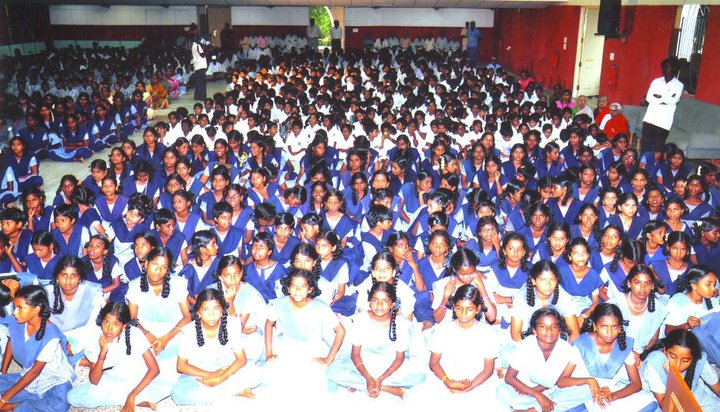
SERVE, LOVE, GIVE, PURIFY, MEDITATE, REALISE. So Says Sri Swami Sivananda Saraswati Maharaj
Swami Sivananda Saraswati (September 8, 1887—July 14, 1963) was a Hindu spiritual teacher and a well known proponent of Yoga and Vedanta. Sivananda was born Kuppuswami in Pattamadai, in the Tirunelveli district of Tamil Nadu. He studied medicine and served in Malaya as a physician for several years before taking up monasticism. He lived most of the later part of his life near Muni Ki Reti, Rishikesh. He is the founder of The Divine Life Society (1936), Yoga-Vedanta Forest Academy (1948) and author of over 200 books on yoga, vedanta and a variety of other subjects. He established Sivananda Ashram, the location of the headquarters of The Divine Life Society (DLS), on the bank of the Ganges at Shivanandanagar, at a distance of 3 kilometres from Rishikesh.
Sivananda Yoga, the yoga form propagated by him, are now spread in many parts of the world through Sivananda Yoga Vedanta Centres, but these centres are not affiliated with Swami Sivananda’s original ashrams which are run by the Divine Life Society. Read More: > HERE <
His Holiness Swami Sivananda was born in Pathamadai in Thirunelveli district, South India. Ever since his childhood, His Holiness was totally devoted to serving others. He worked very hard and graduated in Medicine. As a doctor he earned money but could not obtain peace of mind. He realized that earning a lot of money does not mean earning peace and happiness. Instead, spiritualism alone can help one attain MUKTHI or MOKSHA. His mind was in search of peace and was in a quest for the ultimate purpose of being born in this world. He felt that everyone must have a goal in life and one must lead one’s life with purpose and meaning.
Swami Sivananda proceeded to Rishikesh in North India, where he realized his goal while sitting on the banks of Ganges. He advocated non-violence, truth and worship. Many were impressed by his simplicity and teachings. He gathered a lot of followers and in due course, a mission was started in a small hut which today proudly stands as SWAMI SIVANANDA SARASWATHI SEVASHRAM at Rishikesh. His teachings were simple and he saw God as Omnipotent. He advocated the principle that „ONE CAN FIND GOD IN HIS/HER OWN HEART BY BEING HONEST AND LEADING A SIMPLE LIFE“. He believed the teachings of the Quran, Bhagavath Gita and Bible to be the same. He also believed that there was no need for one to go in search of God, as one can find God in their own hearts by not being selfish, but by making sacrifices for others. Many devotees all around the world were fascinated by his teachings and started several missions in Yoga, Siddha and other spiritual awakenings.The late founders of Sivananda Ashram, Sri S. V. Iyer and Dr. V. Mangalam, started this organization after being enlightened by Swamiji that the only real happiness a human being could find was by serving others.
We hope Swamiji’s teachings inspire and motivate all of us to do what we can to help others lead a better life.
Shri. S. V. Iyer and Dr. V. Mangalam, an elderly couple, started Sivananda Saraswathi Sevashram in 1945 with just 3 kids and with the blessings of Swami Sivananda of Rishikesh. More popularly known as „Sivananda Ashram/Orphanage/Gurukulam“, the organization has grown to be a very well known and well recognized social institution in the country today.
We are a „National Awardee“ institution recognized by the Government of India in 1983.
Sivananda Saraswathi Sevashram is a non-profit organization with the primary objective of protecting orphans, destitute women, the physically handicapped, AIDS-affected children, and the elderly.
With the experience of more than 60 years of recorded services to thousands of poor orphans, Sivananda Orphanage effectively helps transform/grow these orphans to productive citizens. We not only provide food, education and shelter, but also instill character and morals to help them grow, learn and eventually become independent.
Many, including former Prime Minister of India, Shri Pandit Jawaharlal Nehru have visited our ashram and witnessed our committed work. We currently look after 300 children and 80 elderly, all of whom are accepted and cared for with love and affection.
Kundalini Yoga Workshop & Swami Dhirendra
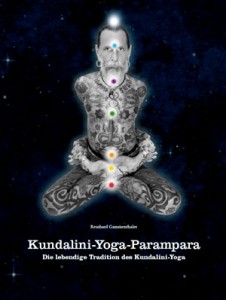
www.hinduism.co.za/Brahmacharya
http://www.sanandayoga.com/workshop
http://archives.digitaltoday.in
Brahmacharya – Sri Swami Sivananda
Brahmacharya (pronounced [brʌmatʃərɪə], Devanagari: ब्रह्मचर्य) whose literal meaning is under the tutelage of Brahman refers to a period of spiritual education in the traditional scheme of life in Hinduism that takes place during the teenage years. This period of time in which the student becomes inculcated in the mystical doctrine contained within the Upanishads is characterised above all else by the practice of strict celibacy. As such, in non-Hindu traditions (see nastika) Brahmacharya denotes a mode of life devoted to spiritual endeavour in which sexual continence is the guiding factor. A Brahmachari therefore is a male (and brahmacharini a female) who observes sexual abstinence unless intentionally procreating. These characteristics correspond to Western notions of the religious life as practised in monastic settings. Read More: > HERE <
Just like his life and his death the origin of Swami Dhirendra Brahmachari is shrouded in mystery. Some sources say that he was born in a respected Brahmana family of Chandpura, a small village in Bihar in Northern India. Others say that he came from a village in Kashmir. There are no records of the day of his birth, and during his lifetime the public was speculating about his real age. He never talked much about his past, but when he remebered his early childhood he used to say that he was a wild and naughty boy with a great sense for adventure, which often put him in difficult and dangerous situations. When he was twelve years old he started to read the Bhagavad Gita and he was deeply impressed when Krishna says to Arjuna: “The Yogin is verily superior to the Tapasvins (those observing austerities), Jnanins (the knowledge-ables) and Karmakandins (those who perform the ceremonial rites). Therefore you should try to become a Yogin!” So he decided to become a Yogi. From this moment he pursued this arduous path with great devotion and deep interest, and he left his family to search for a true Guru. During these years of wandering he met many masters and holy men, but in spite of his ardent efforts it seemed impossible to find the one personal Guru. Many so-called masters turned out to be charlatans or they were demanding a certain hairstyle or dress from him, changes which the stubborn young man wouldn`t accept.
After years of restless search he ended up in great poverty, and he seemed to be stranded. He said about this dark period of desperation: “I had completely lost the idea of a Guru, my mind was absolutely empty. But only when life becomes dark and black like a slate, you can start to write something new. Only where there is absolute emptiness you can fill in something new. Only when his own ideas are wiped out, man is ready to perceive and accept the Absolute. It is a balance between complete devotion and the openness for the Divine or even for what you can call its opposite.” While this struggle between light and darkness was in full swing, he finally met his Guru Maharshi Kartikeya, whose Ashram stood at Gopal-Khera, about twelve miles from Lucknow. There his Guru initiated him into the untold secrets of Yoga. He practiced Pranayama in an underground cave and reached a state of perfect mental equilibrum, which made him enter the realms of higher Yoga. Now he was a Swami, a Siddha and Yoga-Master, and he was directed by Maharshiji to propagate the Yogic Kriyas.
It was in the Bengal capital Calcutta that his first work “Yogic Sukshma Vyayama” was published in Hindi in 1956. Thereafter he came to Delhi and people of all walks of life and from all over the world were attracted to him to learn the yogic practices that he demonstrated.
He taught the first Prime Minister of India, Jawaharlal Nehru, and was the yogic mentor to his daughter Indira Gandhi and her family. 1970 he published his second book “Yogasana Vijnana”, doubtless the best work ever about the correct practice of Yoga-Postures. Because of his extraordinary powers and his charismatic personality he became the counsellor and trustee of the then Prime Minister Indira Gandhi and therefore a political issue. He was running big Ashrams in Delhi, Jammu, Katra and Mantalai (J & K), and thousands of people from all over the world were eager to learn from him.
In the year 1981 he was asked by some journalists if he would leave his body as old as his own Guru Maharshi Kartikeya, who entered Maha-Samadhi 1953 in the age of 336 years, while he was meditating with his favourite Chelas. He answered: “I would gladly do that, if I shouldn`t die in a plane-crash.”
Sri Ganga River of Life Festival 2010
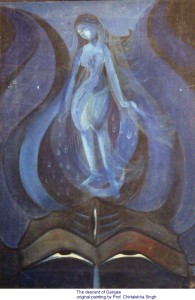
http://sivanandaonline.org/gangadussehra
Gangapujan Dashahara or Dussehra *
* The Descent of the River Ganges, Srimad Bhagavatam 5th Canto 17the Chapter Summary by HDG Srila A.C. Bhaktivedanta Swami Prabhupad.
Ganga Dussehra is the annual celebration of the most sacred of Hindu rivers, Ganga, or the Ganges. The celebration lasts for ten days from the new moon at the beginning of Jyaistha (amanta reckoning). The last day, 10 Jyaistha, is the holiest of them all (this normally occurs in June in the Gregorian calendar, or occasionally at the end of May). Devotees are expected to bathe in the Ganga. If they cannot reach the banks of the river, many devotees will use water drawn from the Ganga that is kept at home to bathe. Alternatively, the devotee will bathe in ordinary water whilst invoking Ganga by prayer. This bathing is considered to impart purity from sin.
Ganga Dussehra: Swami Sivananda’s „Hindu Fasts and Festivals“ and Swami Krishnananda’s „Spiritual Import of Religious Festivals“ have detailed descriptions of the festivals listed here. Click here for ordering details. This Spiritual Calendar is for worships held at the Divine Life Society, Rishikesh, India. Some of the dates may not necessarily hold true for other parts of the world. http://www.dlshq.org/calendar.htm
Sri Ganga Dussehara (Jayesht Shukl Dashmi) 21st June 2010 – This day is auspicious because on this day the sacred Ganges descended in the earth. It can be called birthday of Ganga. A dip in the Ganges or in any other river invoking Goddess Ganges, is beneficial and is said to be purified from ten sorts of sins. Worship of the river deity is done by incense, light, sandal wood, flowers, milk, etc.. Flour balls are fed to aquatic animals.
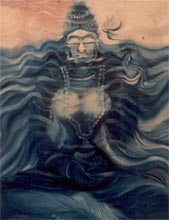
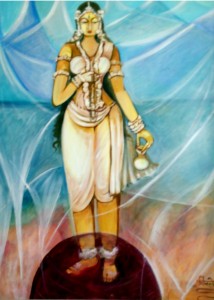
There was a ruler named Sagar. He performed Ashua Medha Yageya. God Indra stole away the ashva (Horse). Sagar’s grandson Anshuman took over the responsibility of the search of the horse. After searching all over, he reached Netherlands with 60,000 followers, where he saw god personified as Kapil saint, was under meditation and the horse was grazing nearby.
The followers of Anshuman shouted, “thief-thief”. Thereupon Kapil rishi opened his eyes and by the blazing lighting of which all were reduced to ashes. For the final cremation ritual of those dead, Bhagirath undertook severe austerities. B’rhma when pleased and asked him to demand a boon. Bhagiratha requested for the descent of Ganges on land. B’rhma agreed but expressed his apprehension if the earth could shoulder the weight and flow of the Ganges, in that case of Bhagirath should invoke God Siva. When Siva agreed to hold the fall of Ganges, B’rhma let it loose from the heavens (swarga lok). The Ganges was then interlocked in the tufts of Siva and Bhagirath’s purpose, of washing the ashes of this ancestors in the water of the Ganges, remained still. There upon Bhagirath invoked Siva, who when please, released the Ganges as river Ganges on the land. The release of the sacred water of the Ganges and its flow through different cities of India is very fortunate, pious, and auspicious for the Hindus of India.
Ganges was not merely a river. She (Goddess Ganga) was devoted to the service of lord K’rsna in the heavens (Swarge-Baikunth). She was thus very near the lord, which made Radha jealous. later cursed her to go down to earth and flow as a river. Ganga, in retaliation, also cursed Radha that you will be close to K’rsna, yet you will always imagine him far away, tolerate separatism and never be peaceful. Thus since then Gange flows as a Ganges river, under the ancient curse of Radha and under the modern curse of city pollution. In the modern times of Kaliyuga, Ganges is of utmost and importance, as according to Narade Purana, all pilgrimages were of influence in Sateya yuga then Pushkar in Treta and Kurukshtra in Dwapar Yuga.
Article by Prof. Chitralekha Singh
Dean: Institute of Visual, Performing Arts & Research, Mangalayatan University, Beswan, Aligarh. Arts Visit at: www.artistchitralekha.com, e-mail: chitralekha@artlover.com, mob . 91 9319103482
SURYA JYOTHI YOGA VEDANTA CENTER
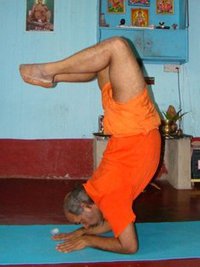
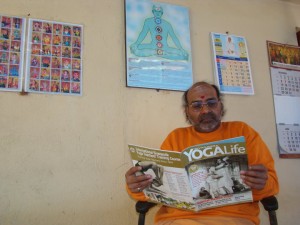
One of the senior disciples of Swami Vishnudevananda and who spent 18 years with gurus mission International Sivananda Yoga Vedanta centre as a Director in different branches. Swamiji is the author of poetry Kaliyuga Vahini in Kannada language. His poetry is coming in all major languages shortly. Swamiji is teaching yoga and Meditation and conducting Satsanga and giving spiritual guidelines to sadhakas all over the world. Swamiji is traveling across the globe in spreading Gurus message.
Sri Swami Krishnananda Saraswati Maharaj (April 25, 1922 – November 23, 2001) was a Hindu saint. He was a foremost disciple of Swami Sivananda and served as the General Secretary of the Divine Life Society in Rishikesh, India from 1958 until 2001.He was one of the most important theologians and philosophers of the 20th century. Author of more than 200 texts, Krishnananda wrote and lectured prolifically on yoga, religion, and metaphysics. His lectures, though delivered extempore (without rehearsal), were known for their structure, style and sophistication, and have been widely published in text form. The works for which Krishnananda is best known are The Realization of the Absolute, The Philosophy of Life, and The Philosophy of Religion. Read More > HERE <
Yoga is a divine knowledge taught by Rishi’s to gain Physical, Mental, Spiritual well being and to attain our Divine quality through following the eight limbs of Raja Yoga called Astanga Yoga. Yoga means union of human sole with the supreme – sole or Almighty god means join Divine & human spirit. This is a Process which liberates the human soul from the bondage of Maya (attachment to worldly things and makes the sole free from rebirth) Only Maya is a strong bondage.
The ultimate Aims of Yoga practice is to get Self –Realization to merge our tiny spark of soul in the ocean of God consiousness.To remove our ignorance due to Maya, to know our own ego, to get freedom from bondages of birth and deaths, to remain in permanent eternal peace, bliss and joy and to realize the complete ultimate knowledge of everything in the universe we should practice this techniques with devotion, faith and proper understandings . Without devotion we never reach any where in this practice.
Love yoga? Want to get started? Become a teacher?
SURYA JYOTHI YOGA CENTRE offers an amazing range of yoga retreats and trainings for people at all levels of experience.
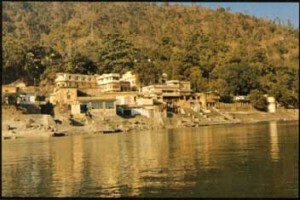
Sivananda Ashram (Headquarters of The Divine Life Society) Rishikesh, Himalayas, India.
The Divine Life Society was founded by the great Saint and Sage of modern times, Swami Sivananda, in the year 1936. It was founded for resuscitating the higher values of life beyond the limitations of perceptional and cognitional evaluations of life. The Founder’s main intention was to awaken humanity towards the ways and means of imbibing in one’s life the characteristics of Ultimate Reality, veritably God-realisation.
Towards this end a vigorous disciplinary process has to be undergone by imbibing in one’s personal life the other associated values, such as the social, ethical, and austere principles, all which have to be set in tune harmoniously with everything that is considered as part of one’s life at any stage of one’s existence in this world. This is briefly the great vision of the Founder, Swami Sivananda.
All material on this website is copyright. This website is independent of the Divine Life Society.
- SWAMI SIVANANDA – YOGA IN DAILY LIFE <
- Ayurveda – H.H. Swami Sivananda Maharaj <
- H.H. SWAMI SIVANANDA – SELFLESS SERVICE <
- Meet Surya Jyothi Yoga Vedanta Center, studies, friends at fb <
- Meet Swami Sivananda – Divine Life Society, studies, friends at fb <
- AN APPEAL FOR YOGA GURUKULAM CONSTRUCTION PROJECT at fb <
Interfaith Center: Gala Dinner with Yusuf Islam
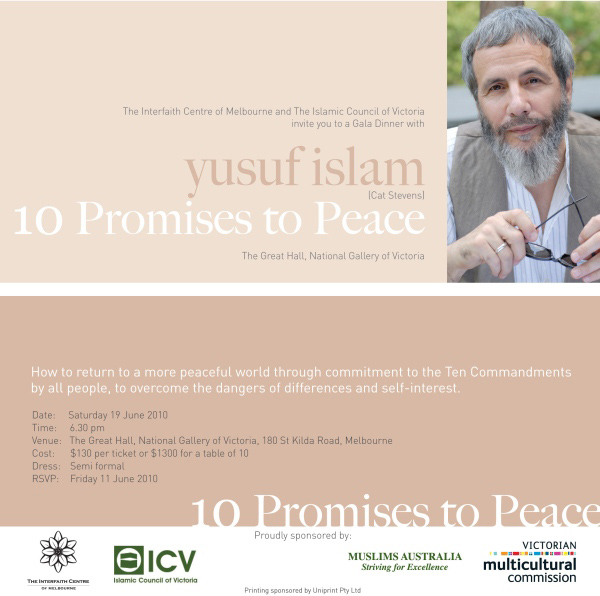
There have been several meetings referred to as a Parliament of the World’s Religions, most notably the World’s Parliament of Religions of 1893, the first attempt to create a global dialogue of faiths. The event was celebrated by another conference on its centenary in 1993. This led to a new series of conferences under the official title „Parliament of the World’s Religions“. Read More: > HERE <
Yusuf Islam (born Steven Demetre Georgiou; 21 July 1948 in London, England),commonly known by his former stage name Cat Stevens, is a British musician. He is a singer-songwriter, multi-instrumentalist, educator, philanthropist, and prominent convert to Islam. Read More: > HERE <
The Interfaith Centre of Melbourne emphasizes the development of events and programs that involve and attract youth who are searching for deeper meaning in their lives, and who show deep concern for the future of humanity and the planet.
Building Harmony – The State of Victoria is one of Australia’s most multi-cultural States. It comprises people from more than 208 countries. Victorians speak over 150 languages and follow more than 100 faiths. Whilst there are no large-scale community relation’s conflicts, the report tabled in the Commonwealth Parliament in November 2000, „Conviction with Compassion: A Report into Freedom of Religion and Belief“, suggests that elements of racism and religious intolerance remain endemic in our society. Our broader community is not always aware of the level of distress and harm experienced by members of minority groups.
Combating prejudice and assisting people to overcome disadvantage are two of the Victorian Government’s key priorities. Our mission and educational/cultural programs seek to complement the Victorian Government’s promotion of racial and religious tolerance, and issues of social justice.
AHIMSA IN YOGA, MUSIC AND SPIRITUALITY
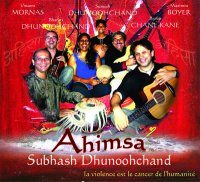
> Presentacion para la reunion de lanzamiento del proyecto <
> Free Streaming, Music Downloads, etc… <
> Tabla classique à La Réunion <
Ahimsa (Sanskrit: Devanagari; अहिंसा; IAST ahiṃsÄ�, PÄ�li: avihiṃsÄ�) is a term meaning to do no harm (literally: the avoidance of violence – himsa). It is an important tenet of the religions that originated in ancient India (Hinduism, Buddhism and especially Jainism).
Ahimsa is a rule of conduct that bars the killing or injuring of living beings. It is closely connected with the notion that all kinds of violence entail negative karmic consequences. The extent to which the principle of non-violence can or should be applied to different life forms is controversial between various authorities, movements and currents within the three religions and has been a matter of debate for thousands of years. Though the origins of the concept of ahinsa are unknown, the earliest references to ahinsa are found in the texts of historical Vedic religion, dated to 8th century BCE. Here, ahinsa initially relates to „non-injury“ without a moral connotation, but later to non-violence to animals and then, to all beings. Though meat-eating and slaughter of animals are criticized by some Hindu texts, other texts present counter-arguments in support of ritual sacrifice. In the 19th and 20th centuries, prominent figures of Indian spirituality such as Swami Vivekananda, Ramana Maharishi, Swami Sivananda and A. C. Bhaktivedanta Swami Prabhupada emphasized the importance of ahinsa. Mahatma Gandhi applied ahinsa to politics, by his non-violent satyagrahas. Read More: > HERE <
One of French’s most innovative sound artists, Subhash Dhunoohchand’s consistently challenging albums and live performances have been central to the continued rise of Indian-influenced fusion music. A pivotal figure in Reunion Island, France he has pursued his own audio explorations with his new project TABLATRONIC.
Here, the dates of our next concerts in Reunion Island:
- 7 Avril 2010, Le Mag TéléRéunion, AHIMSA et YATRA
- 9 Avril 2010, salle guy alphonsine YATRA musique live et danse indienne (kathak, bharatanatyam, odissie)
- 10 Avril 2010, Show Case Hyper U Bel Air St Louis, 15H à 18H, Tablatronic et Ahimsa
- 14 Avril 2010, probablement dans l’Est…
- 16 Avril 2010, probablement dans le Sud…
- 17 Avril 2010, probablement dans le Nord-Est…
- Keep in Touch !
Born in Mauritius of Indian parents he is the 4th generation in the island call the paradise of the Indian Ocean. Subhash Dhunoohchand was inspired by his father, late Balram Dhunoohchand to learn the precision beats of the tabla, which he began playing when he was 17. Later he went to India for further classical training as a student of Pandit Sudhir Kumar Saxena. He ha s been working with such diverse musicians as Pt Hariprasad Chaurasia, Pt Budhaditya Mukherjee, Rupak Kulkarni, Rakesh Chaurasia, Sazed Ul Alam, Trilok Gurtu and many well known jazz musicians like Ola Melander, Anatholi Bulkin, Xavier Rudd and Lars Gullikson.
Subhash Dhunoohchand is the disciple of Pt S.K. Saxena and has played with great musician like, Pt .Chaurasia, Pt B. Mukherjee, Trilok Gurtu, Susheela Raman, Xavier Rudd etc….// Fusion of Indian, African & Reunion Music. La rencontre de la musique indienne, africaine & réunionnaise.
In the mid-90s Subhash founded Cosmic Sound, an indo jazz fusion music group. In 1993 he release his first CD, Raga Marwa of Indian Classical Music in Sweden with Sazed Ul Alam and at the same time performing with the jazz fusion music group. His groundbreaking debut release Obsession, was recorded in France, and featured contributions from Anupriya Deotale, late Soudama Jankee, Anatholi Bulkin, Celine Bonacina and Rupak Kulkarni. An astonishing marriage of traditional Indian sounds and jazz, it deservedly received strong reviews.
For this European tour Subhash is travelling with his son Sumesh on tabla, Bharati on vocal, Bruno Chane Kane on electric guitar from France and Nandkumar on bass tabla. We are also performing with some indian music musicians from London. A dedicated fusionist with both an uncanny ear for melody and an innate talent for complex rhythms, Subhash Dhunoohchand always seems to be one step ahead of his electronic.
Yama, niyama, asana, pranayama, pratyahra, dharana, dhyana and samadhi are the eight limbs of yoga . Ahimsa, satya, asteya, bramacharya and aparigraha are the five yamas – The yoga sutras of Patanjali, 2.30-31
In the classical yoga system described by Patanjali more than two thousand years ago, the first stage (or limb, as they are generally called) of yoga is Yama (ethical disciplines) and of these, Ahimsa is the first.
In short, according to Patanjali, ahimasa, non-violence or, as Desikashar defines it, „Consideration for all living creatures, especially those who are innocent, in difficulty or worse off than we are“ should be the very beginning of any yoga practice.
- www.gandhiinstitute.org
- www.bansuriflute.com
- VEDIC BOOKS: THE ART OF TABLA RYTHM <
- TRADITIONAL MUSIC INSTRUMENTS, Sound & Yoga <
- YAMA AND NIYAMA <
- Meet Hariprasad Chaurasia, studies, friends, fans at fb <
- Meet Prasad Bhandarkar´s, studies, friends, fans at fb <
- Meet Sheela Bringi, studies, friends, fans at fb <
- Meet Subhash fans club at facebook <
- Meet AHIMSA Nonviolence , friends , fans at fb <
- Meet Ghandi Institute of Nonviolence, friends, fans at fb <
Researches in Indian and Buddhist Philosphy
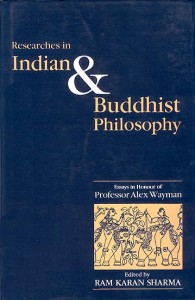
> Chap16: Comp. Siddis in Bhagavata Purana & Patanjali Yoga Sutras <
> BOOK: SIDDHIS IN THE BHAGAVAD PURANA <
Siddhi (Devnagari सिद्धि) is a Sanskrit noun that can be translated as „perfection“, „accomplishment“, „attainment“, or „success“. The term is first attested in the Mahabharata. In the Pancatantra, a siddhi may be any unusual skill or faculty or capability. As a legal term in the Manusmriti, it refers to the settlement of a debt.
In the Samkhya Karika and Tattva Samasa, and hence in Tantric Buddhism, it specifically refers to the acquisition of supernatural powers by magical means or the supposed faculty so acquired. These powers include items such as clairvoyance, levitation, to be present at various different places simultaneously, to become as small as an atom, to materialize objects, to have access to memories from past lives, etc. The term is also used in this sense in the Sarvadarsana-samgraha of Madhvacharya. Read More: > HERE <
Researches in Indian and Buddhist philosophy:
Essays in honour of Professor Alex Wayman, RÄ�ma Karaṇa ŚarmÄ�
The present volume, comprising ninteen articles by renowned scholars, is divided into three sections, namely, Buddhist Jaina and Hindu Philsosphical Researches. The articles in Hindu section take a comperative base. K.K.Raj compares the Buddhist and Mimamsa views on Laksana. K. Bhattacharya speaks of grammarians and philososphers regarding post-Panini grammarians on a certain anusasana. R.C.Dwivedi compares kashmir Saivism with Sankara`s Vedanta and T.S.Rukmani compares Siddhis as found in the Bhagavata Purana and in Patanjali`s Yogasutras. R.V. Joshi compares the Advaita and the Vaisnava views of the matter.
The present volume, comprising nineteen articles by renowned scholars, is divided into three sections, namely, Buddhist, Jaina and Hindu Philosophical Researches.
Under the Buddhist section Bareau, using the Vinaya in Chinese, defends Wayman’s position that Asanga belonged to Mahisasaka sect. Nakamura points out differing view about the seven Vajjian Republic principles. Michael Hahn and Samtani concern with Buddhist poet Candragomin and the term raga resectively. Shinjo Kawasaki expounds the views of Bhavya about the differing karma of non-sentient and sentient beings. Hirakawa’s article deals with the relation with dhatu. Collett Cox shows that the present 12-membered formula is taken for granted by early Chinese Abhidharma texts.
In Jaina section, Jaini deals with the theory that an omniscient being can subsist on a subtle kind of food. Dhaky’s main object t ascertain early parts of Dasavaikalikasutra, also goes into the matter of food.
The articles in Hindu section take a comparative base, K.K. Raja compares the Buddhist and Mimamsa views on Laksana. K. Bhattacharya speaks of grammarians and philosophers regarding post-Panini grammarians on a certain anusasana. R.C. Dwivedi compares Kashmir Saivism with Sankara’s Vedanta and T.S. Rukmani compares siddhis as found in the Bhagavata Purana and in Patanjali’s Yogasutras. R.V. Joshi compares the Advaita and the Vaisnava views of the matter.
The work breaks new grounds and is a solid contribution in the field of Indian Philosophy.
About the Author – Prof. R.K. Sharma as a Fulbright Scholar, worked with Prof. M.B. Emeneau at University of California. He has all along been contributing to promotion of Sanskrit Studies in India and abroad as Founder Director, Rashtriya Sanskrit Sansthan, Joint Educational Adviser, Govt. of India, Vice-Chancellor of the two Sanskrit Universities at Darbhanga and Varanasi, Visiting Professor at Columbia University of New York City, University of Bihar and Chicago, Organizing Secretary of two world Sanskrit Conferences, etc. He is a recipient of Presidential Award of Honour in Sanskrit and a Fellow of the Royal Asiatic Society.
Yogis in Tibet
Instructions On Siddhis
1. By the process of Hatha Yoga, the Yogi attains perfect physical body—Rupalavanya Bala Vajrasam-hanana Kaya Sampat. “The perfection of the body consists in beauty, grace, strength and adamantine hardness.” The power to bear extreme cold and heat (Titiksha), the power to live without water and food and other powers come under the category of Kaya Sampat (perfection of body).
2. Since the body of the Hatha Yogi is perfect and firm, his mind also is firm and one-pointed. By the practices of Dharana and Dhyana, he reaches the highest rung in the Yogic ladder and attains Immortality through Yogic Samadhi. The Yogi who has reached the highest stage, will have the 8 major and all the minor Siddhis.
3. Attainment of powers depends upon the amount of concentration at different Chakras and Tattvas and awakening of Kundalini. The practice of Mudras, Bandhas, Asanas and Pranayamas will also help a lot in acquiring Siddhis.
4. The Siddhis that are obtained by the practice of Mudras can be obtained by the practice of Bandhas, Asanas, Pranayamas and also by the concentration on different Chakras. That depends upon the temperament and capacity of the aspirants. One can obtain the desired goal by one exercise and others by different methods. Therefore if one is not able to get success by a particular exercise, he will have to have recourse to other exercises.
5. Many of the 8 major Siddhis are not possible at all at the present age (Kali Yuga), when the body and mind of the vast majority are not fit enough. Even today there are several Siddhas who have the power to perform some of the Siddhis. When people approach them to do this and that, they hide themselves or generally say:—“I do not know.” They are not much particular about these Siddhis. Their aim is to ignore these as unreal and aspire to reach the highest. They are the only real Yogins. Many are able to use some powers and they do not know how they are able to do them.
6. One can read the thoughts of others. A man in London hears the spiritual message of sages in India. You have seen several persons removing the poison of cobras by chanting some Mantras or by mere touch. By giving some sort of leaves, incurable diseases are cured. There are men who will very accurately tell your past, present and future. Some are able to see astral entities. Stopping the functions of the heart and changing the mind of others and other powers are due to Yogic practices.
7. Nowadays you cannot find a man who has developed all the powers. When one gets certain powers, he stops there by the influence of Maya and false Tushti (satisfaction) and uses the powers for his livelihood or for fame. Therefore he is not able to proceed further and attain perfection. It is not the mistake of the Yogic Kriyas. You should not lose faith. Faith, attention, sincerity and earnestness will lead you to success.
“ Of one thing we can be certain. The real Siddha who does not want or care for Siddhis, but who manifests Siddhis for unselfish reasons and as a result of communion with the Lord or the Brahman, is an entirely different person from the little man who has psychic powers to do things which are extraordinary or who has control of spirits. The power over spirits (good or bad) is entirely different from spiritual power. And no real Siddha goes about calling himself a Bhagavan or parading his powers. It cannot be said that the Siddha does not know that he performs miracles but they are not miracles to him—they are just ordinary things for him because he lives in the plane beyond the reach of the common man. I have to conclude that Swami Sivananda is one such. But he does not reveal himself as such to all and sundry.“ – Sri Swami Sivananda
- Also read from Kundalini Yoga- SRI SWAMI SIVANANDA
- KUNDALINI
- INTRODUCTION
- YOGA SADHANA
- PRANAYAMA
- PRAYER TO MOTHER KUNDALINI
- EXPERIENCES ON AWAKENING OF KUNDALINI
- GRADATIONAL ASCENT OF MIND
- PRANAYAMA FOR AWAKENING KUNDALINI
- ASANAS
- MUDRAS AND BANDHAS
- EIGHT MAJOR SIDDHIS
- DHARANA
- YOGA-KUNDALINI UPANISHAD
- Tibetan schools of Yoga:
- Anuyoga
- Mahayoga
- Six Yogas of Naropa
- Trul khor (Yantra Yoga)
YOGA, TREE AND OUR UNIVERSE
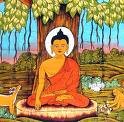
The Originar of Hatha-Yoga
Tree is the highest evolved form in plant kingdom. Man is the highest evolved species in Animal kingdom. Mushrooms are the best fungi visible on this planet. There is commonality of forms among all these highest evolved forms among different type of life-forms -Tree-like structure.Man is a cerebro-spinal being sheathed within a fleshy body. Most evolved form of cell is neuron that mediates consciousness is Tree-like structure. Surprisingly, most powerful thing that mankind achieved viz. atom bomb , produce Tree-like clouds after exploding on the surface.
Tree-like structure in Nature!
One can find out where else do Tree-like structure in nature exist. Pliny, the Younger linked the eruption of Vesuvius eruption in 79 A.D. with Italian umbrella pine. It is now an established scientific fact that the most powerfur process within earth, volcanic plumes that move inside earth is umbrella-shaped with a column & umbrella spinning about vertical axis( Tree-like). The most terrible force on the surface of the earth are the Tornados which are again Tree-like shapes with a column & an umbrella. Tree-like shape is found in other very powerful phenomena like lightening flashes, electric sparks, river delta, snowflakes, coral .
Tree-like structure is characteristics of every visceral system. Biologists trace this form in the mosses, lichens, shrubs, root system, mammalian lung bronchioles, cells of nervous system, veins & arteries forming cardio-vascular system. Wheresoever there are branching system, that invariably culminate in a Tree-like structure.
Tree & Fractal Geometry
In last fortnight, a brilliant paper was published in ‚Advances in Soft Computing“, under the title“Algorithms for Tree-like Structure Generation“ by Anna Romanowska, a neuro-anatomist et al. The team characterised Tree-like structure as that form which bifurcates but do not form any cycles. The team picked up the concepts of fractal geometry & fused with algorithms to create a Recurrent Algorithm. Self-similarity and repetition of sequence( iteration) is generated by a bifurcating cascade. The team concluded that if living system are generated recurrently, complex organic structures like roots, bronchial system in lungs emerge.
Now that an algorithm for Tree-like structure has been generated, it will be feasible in a decade to manufacture on mass scale silicon bronchial/ cardio-vascular/ neural system .
Before the advent of Fractal geometry by Benoit Mandelbrot during 1970s, the question of Tree-like structure had perturbed many a great minds. Hisao Honda of University of Kyoto published a paper on “ Description of the Form of Trees by the parameters of the Tree-like body“ in the Journal of Theoretical Biology, May, 1971. Honda concluded that Tree architecture maximizes flow access. He found stastitical similarity in living & non-living world, among branching in living system & geological & geophysical system.
- Meet Swami SIVANANDA friends, yoga, studies, at facebook <
- Meet Bhagavad Gita friends, yoga, studies at facebook <
- Meet Patanajali friends, yoga, studies at facebook <
- Meet Buddhism, friends, studies, Medicine at facebook <
- Meet Paramahansa Yogananda friends, groups, studies at fb <
- Meet Raja Yoga, Friends, Group, studies at facebook <
- Meet IYENGAR (B.K.S.), Yoga, Friends, Studies, Groups at fb<
- Meet Swami Vivekananda, Yoga, Studies, Friends, Groups at fb<
- Meet Bhagavad Gita, Yoga, Studies, Friends, Groups at fb <
- Meet Ramana Maharshi Groups, Friends, Studies, Fans at fb<
- Meet Hinduism, Groups, Friends at facebook <
- Meet Kashmir Hinduism, Studies, Friends at facebook <
- Meet Shaktism and Devi the Godess at facebook <
- Meet Saundaryalahari: Wave of Bliss by Shankaracharya at fb <
- Meet Arsha Vidya Gurukulam, Studies, Friends, Fans, at fb <
- Meet Advaita Vedanta,Groups,Studies, Vivekananda at fb <
- Meet Yogi Yogendra Nath, Studies about Goraksha at fb <
- Meet Jaya Kula and the three ways of Practicing tantra at fb <
- Meet VASTU, Friends, and Study Groups at facebook <
- Meet Jyotish, Friends, and Study Groups at facebook <
- Meet Sacred Geometry at facebook <
- READ MORE HERE:
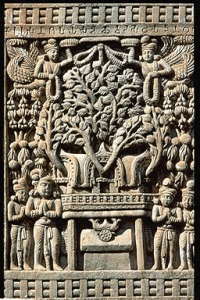
Morphic field & Morphic Resonance!
Tree-form is found in lower kingdom of Animal as well as Fungi. Jelly fishes or the polyp, these are invariably shaped like Trees. The colonies of proliferating marine organism replicate this form. It is interesting that jellyfishes which have no neurons & man with maximum neurons are essentially same in shape. Great Scottish biologist, Sir D’Arcy Thompson wrote in 1917 „On Growth and Form“, to analyse patterns & shapes in nature. His erudite tradition sd being carried by Rupert Sheldrake, a British biologist. He has done extensive work on the concept of morphic field & morphic resonance. By morphic resonance, he explains the influence of Like upon Like by which a connection among similar fields is established. He has shown in his work example of crystallization. It is very difficult to crystallize a new compound for the first time. Once it is done, a morphic field emerge. It is easier next time if someone does elsewhere in the world. There is a cumulative influence & it gets easier & easier to crystallize the compound. There is an accelerated rate of crystallization . Similarly, in learning among rats, this phenomena has been experimentally confirmed. It is difficult for a rat to pass through a maze for the first time. But, once a rat does this, another rat elsewhere does it much easily. And with each learning , there is spontaneous spread of new habits. For Sheldrake, evolutionary spread of new habit is not genetic but depends on a kind of collective memory due to morphic resonance.
This can be easily comprehended in case of human. It was very tough to manufacture clock or VCD or computer. More people are manufacturing, easier it is getting to manufacture. Watches, transistora & VCDs are now cottage industry. Who knows in future, robotics will emerge as similar kind of easily handled industry and there will be garages in every nook & corner of city to repair robots or even remodell robots by neighbourhood mechanic.
Sheldrake further proposes the concept of the „Memory of Nature“. Habits of nature depend on non-local similarity reinforcement. Through morphic resonance, the pattern of activity in self-organizing system are influenced by similar patterns in the past. He brings back the idea of Carl Jung‘ collective unconscious.
Examining Growth of Tree-Form!
I find the concept of morphic resonance appealing. That can explain this frequent recurrnce of similar pattern in nature. If we ponder over the shape of DNA & its future. The fluid around earth’s inner core creates a helical movement and generates magnetic field. The geodynamo of the earth is a self-replicating system that help explain the continuity of magnetism in earth’s core , otherwise it would have dissipated within 20,000 years. Now, the transformatory biological molecule,DNA, is helical as well as self-replicating. Within geo-physical processes, we know that Tree-like plumes are created. Now, this geophysical structure resonates throughout future evolution of biological world. For every plume within, there is a tornado on the surface. This first form of powerful process recurs at the level of the most developed categories at various levels, may it be fungi, or plants or animals or cells. And, that form recurs in even man-made powerful processes like atomic explosions.Upon visualizing this sequence, I can very well predict that the most successful biological robots or most efficient spaceship for planetary travels would have Tree-like architecture. Our Discovery spaceship is a poor materialization of that critical architecture.
Tree & bifurcation!
This Tree-like structure itself is generated by recurrent self-similarity which results due to behaviour of a dynamic system. Now, the chaos theorists have worked out very well that how in a dynamic system , a stage of crisis is set in and at the point , there are two possibilities for the system to transform. Sometimes, the system oscillates between two possibilities as found in certain chemical clocks extensively investigated by Nobal laureate Ilya Prigogine.Most of the times, the branches grow further and then bifurcate. This is iteration of self-similarity that later results into Tree-like structures.
If this kind of bifurcaing iteration is fundamental to our changing Reality which is dynamic, and there is morphic resonance, one can draw the contours of this phenomena of emergence of Tree-like structure at a higher level.
End of biological evolution!
The bifurcation, that determines DNA-replication to cell-division, has finally achieved its destiny in the biological world in the form of Human beings. We are the highest biological form and the biological evolution has now concluded. There is no further scope of biological evolution beyond us.Perfect biological bifurcating branching system has been achieved. Our lungs, our cardio-vascular system, neural system .. everything has emerged as mere consequence of cascading bifurcation. Surprisingly, we have greater number of most evolved cells viz. neurons (200 billions) which themselves replicate own form at macrolevel. The cerebro-spinal system is a magnified neuron. We are the only animal to walk on 2 legs. Penguins do perform but lack other binarities. We have two legs, two hands, two nostrils, two ears, two testicles, two mammary glands, two eyes, two kidneys, two hemispheres in brain, two atrium, two ventricles in heart, two excretory points, two lips, two jaws. Our thinking pattern is also binary. Our categories are in twos- good/bad, high/low,sacred/profasne, self/other… We donot yet understand that this duality in thought is rooted in hemispheric brain or in fractal geometry. There is no more bifurcation & branching possible in bodily architecture of human beings. This is the end-point of biological evolution. Now, mankind is on verge of developing biological robots & higher order machine consciousness therby imbuing consciousness to physical world bypassing the biological evolution. We are becoming the co-creator of the Universe as well as agent to accelerate self-consciousness of physical matter in the universe.
Trees are our cousin!
Now, the issue of Tree-like structure resonates into our collective psyche. Tree is the source of wisdom, healing, nourishment, power. Bible myth has Tree . Newton discovered moodern science sitting under an apple Tree. Buddha discovered non-theistic self-awareness sitting under a peepul Tree. In Tibetan tradition, powerful meditation requires visualizing Tree of lineage with various Gurus on different branches. These kind of visualization has transformative effect on our consciousness. In every culture, Tree occupies a significant position in rituals & mythology. We feel special feeling with Tree. Our romantic mood, our wisdom, contemplative mood, aesthetic mood.. orbit around physical & metaphoric Tree. Tree have power to transmit some kind of healing power to us. Tree are the source of healing body through fruits & herbal medicine . Tree heals our body, mind as well as soul, if any. The processes involved may be a kind of morphic reonance that vitalizes self-similar cardio-vascular, respiratory & neural system.Trees are our morphic cousins. We feel guilty & hurt when trees are cut or when those are under environmental threat.
Future?
One thing is certain. Future robots & spaceships which would be most efficient to survive would have Tree-like architecture. We would have very little to do with blooming of age of nanotechnology, biotechnology & Artificial intelligence. Successful creation of algorithm for Tree-like structure has made it more likely that artificial human organs can be manufactured at industrial level. When death will be conquered after successful download of Memories & large scale diffusion of bionics, We would have enough time to resonate with biological Trees in solitude & steer mankind towards a spiritual evolution as biological evolution from DNA-pathway has reached a dead end!
(Niraj,1.11.2009)
Shivaratri, most significant of all Festivals
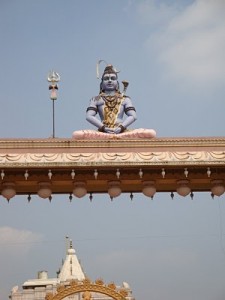
> Int. Interreligiöser Kalender <
> 12 Jyotir Lingas, Seats of Lord Siva <
> OMKARESHWAR ASHRAM, SCHOOL PROJECT <
> SRI RAMANA SEVA ASHRAM – Message No. 132.<
On 12th febrauary 2010, Maharshivaratri(lord Shiva’s Birthday) is celebrated all over the world. Maha Shivratri or Maha Sivaratri or Shivaratri or Sivaratri (Night of Shiva or „Great Night of Shiva“) is a festival celebrated every year on the 13th night/14th day in the Krishna Paksha (waning moon) of the month of Maagha (as per Shalivahana or Gujarati Vikrama) or Phalguna (as per Vikrama) in the Hindu Calendar (that is, the night before and day of the new moon). The festival is principally celebrated by offerings of Bael (Bilva) leaves to the Lord Shiva, all day fasting and an all night long vigil. Ganja is traditionally used as an offering for Lord Shiva and his followers. Read More: > HERE <
Shivaratri — The most significant of all festivals
Shivaratri is celebrated every year with a lot of religious fervour and devotion. Devotees keep fast, make offerings on Shivaling and stay awake all night (jagarari) to get the blessings of God Shiva. Unknown to most of the devotees the festival of Shivaratri holds the mystery to something most crucial namely, how God liberates the entire humanity from sorrow and suffering.
Till this mystery is solved by God himself, Shivaratri is celebrated merely as an annual ritual sans its original significance and purpose. To truly celebrate Shivaratri it is vital to know as to who Shiva is and what the word ‘Ratri’ which means night has to do with Shiva. The Supreme Soul is one and souls are many. The Supreme Soul is the Creator and Director of the eternal World Drama and souls are the actors in it. By becoming pure souls can become a great soul (mahatma), religious soul (dharamatma) and a divine or deity soul (devatmd) but they cannot become Supreme Soul i.e. paramatma. Souls are the progeny and not a part of the Supreme Soul. God Shiva is the creator of all deities even Brahma, Vishnu and Shankar.
Devotees worship them as devtaya namaha (salutations to the lords or deities). In comparison, Shiva is always worshipped as Shiva Paramatmay Namaha (Salutations to God Shiva) and Om Namaha Shivay (I salute Shiva). Lord Rama and Lord Krishna are shown as worshipping God Shiva at Rameshwar and Gopeshwar respectively.
The light form of God Shiva has been idolized as jyotirlingam (pillar of light) in 12 famous jyotirlingam Shiva temples in India viz. in Kedarnath, Somnath and Mahakaleswar etc. The light form of God is worshipped in most of the faiths in the world. Interestingly, Shivaratri does not mean Shiva’s night. The festival commemorates God’s descent on earth to end the unlimited Ratri (night) of ignorance and suffering and to usher in the golden dawn of peace, harmony and happiness.
“ Feste und Fastentage im Hinduismus „
von SWAMI SIVANANDA, 25. Kapitel – Shivaratri
siehe: > www.yoga-vidya.de <
>„1-Woche-vor-Shivaratri-Vortrag-mit-Sukadev“ <
Here Ratri connotes that critical juncture in eternal world drama cycle when unrighteousness reaches its extreme and all human efforts to redeem the situation fail. It’s a period of extreme sorrow and suffering when the vices (bad habbits) of ego, lust, anger and attachment rule human thoughts and actions.
In Hindu scriptures there is mention of the night of Brahma and also the night of the shaktis or goddesses (Navratris). The night of Brahma signifies the age of ignorance and unrighteousness in which God’s first and purest creation, Brahma and the Brahmins, are clouded by ignorance and vices. When God Shiva comes and opens their third eye of wisdom by bestowing divine intellect, they are able to forge a mental link with Him and draw His power. They thus become Shiva Shaktis who destroy ignorance and vices in the world with the help of Shiva. The Navratri (festival of nine nights) is a memorial of the end of the unlimited ratri in which devotees invoke the blessings of Shiva Shaktis and sing praise of their divine actions. It is at such a time when God intervenes to perform the divine acts of re-creating the new world order of purity, peace and prosperity and destroying the old worldorder of viciousness, violence and deprivation, as described in the Bhagavad Gita.
Just as night ends and day dawns when the sun rises, in the same way to end the night of ignorance God Shiva, the Sun of Knowledge (Gyan Surya) incarnates at the fag end of Kaliyuga, in Bharat.
This period of spiritual enlightenment is sailed Sangamyuga (Confluence Age) in which the most auspicious confluence of the Supreme Soul Shiva and human souls takes place. This is the most elevated period in human world when God incarnates in an ordinary man’s body and names him Prajapita Brahma through whom He reveals the most profound cnowledge about the Creator and His Creation. He reveals the supreme wisdom of Rajyoga which helps human beings absolve their sins and attain their original purity and perfection. That s why God Shiva is knowledgefull and patitpavan (purifier).
He is also the liberator and guide whose incarnation sets in process the destruction of the unrighteous iron-aged world – the present Kaliyuga – and consequently the liberation of ill souls from sin and suffering. God Shiva guides all souls to the land of liberation – the souls world where freed from their bondages they live in peace and silence. Thus He is also called Mahakaal (the great death or the eternal time) whose advent signals the return of everything in Creation to its original state.
This purification leads to the creation of a new pure world order Satyuga. It is the time on the world drama cycle (Srishti Chakra) which is remembered as Paradise, Heaven, Vaikunth, or Swarg where complete purity, peace and prosperity prevailed.
That is why the supreme Father of all souls is called the Creator and Shiva, which means the benefactor of all, who does good to every soul by incarnating in this world.
And the happiest news is that this golden key which opens the gates of the Golden age, Satyuga or Paradise is being given right now by Supreme Soul God Shiva himself to His spiritual children who have recognized His incognito incarnation in the human medium of Adi Dev Prajapita Brahma.
It is now that we have to awaken the soul (jagarari) and stay in the remembrance of God Shiva (up-vas means to stay close) take the oath of celibacy, sacrifice the bitterness of vices (bad habbits) on Shiva, and let the divine knowledge of Shiva flow drop by drop to all souls.
By adopting this true method of celebrating Shivaratri we should claim the greatest blessing mukthi , liberation in life, from God Shiva in this birth.
SRI ADI SANKARA, Yoga, Books, Arts, Studies
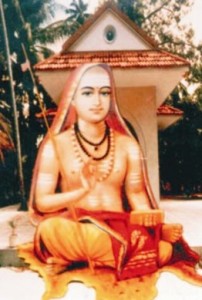
> KAMAKOTI PEETHAM (founded pers. by Sri Sankara) <
> SRI SANKARA UNIVERSITY OF SANSKRIT <
> The Biography by Swami SIVANANDA <
> BHAGAVAD-GITA, commentary of Sri Sankaracharya (1901) <
> KAMAKOTI Go Green Solar Power Project <
Adi Shankara ( DevanÄ�garÄ�: आदि शङ्कर, Ä�di Śaṅkara, pronounced [aːdi ɕaŋkərə]); (788 CE – 820 CE), also known as Śaṅkara BhagavatpÄ�dÄ�cÄ�rya and Ä�di ŚaṅkarÄ�cÄ�rya, was an Indian philosopher who consolidated the doctrine of Advaita Vedanta, a sub-school of Vedanta. His teachings are based on the unity of the soul and Brahman, in which Brahman is viewed as without attributes. He hailed from Kalady of present day Kerala. Shankara travelled across India and other parts of South Asia to propagate his philosophy through discourses and debates with other thinkers. He founded four mathas („monasteries“), which helped in the historical development, revival and spread of Advaita Vedanta. Adi Shankara is believed to be the organizer of the Dashanami monastic order and the founder of the Shanmata tradition of worship.
His works in Sanskrit, all of which are extant today, concern themselves with establishing the doctrine of Advaita (Nondualism). He also established the importance of monastic life as sanctioned in the Upanishads and Brahma Sutra, in a time when the Mimamsa school established strict ritualism and ridiculed monasticism. Shankara relied entirely on the Upanishads for reference concerning Brahman and wrote copious commentaries on the Vedic Canon (Brahma Sutra, Principal Upanishads and Bhagavadgita) in support of his thesis.
The main opponent in his work is the Mimamsa school of thought, though he also offers some arguments against the views of some other schools like Samkhya and certain schools of BUDDHISM that he was familiar with. Read More: > HERE <
Scholastische Phase des Yoga
Diese Phase beginnt mit Shankaracharya (788-820 n. Chr.), der den Vedanta systematisierte und die besten Teile von Samkhya, Yoga und Buddhismus in den Vedanta integrierte. Nach ihm kamen andere Lehrer, die das Prasthana-Trayam anders verstanden, und konkurrierende Vedanta-Schulen gründeten. Advaita-Vedanta – diese von Shankara vertretene Auslegung sieht alle wahrgenommenen Unterschiede der phänomenalen Welt als unwirklich an. Alles was existiert ist nichts anderes als Brahman; doch Brahman hat keine Teile oder Unterschiede in sich. Die wahrgenommenen Unterschiede sind wie eine Fata Morgana. Mehr Lesen/Read More: > Here <
Adi Sankaracharya’s Soundarya Lahari, Translated by P. R. Ramachander: Introduction: Soundarya Lahari meaning waves of beauty consists of two parts viz. Ananda Lahari meaning waves of happiness (first 41 stanzas) and Soundarya Lahari(the next 59 stanzas). It is believed that Lord Ganesha himself has etched the Ananda Lahari on Mount Meru(Some people believe that Sage Pushpa Dhantha did the etching).
It was read from there by Sage Gouda Pada who taught it to Adhi Sankara. Adhi Sankara himself added the rest of the 59 stanzas and completed it.
These 100 stanzas are supposed to be the foremost among Manthra literature. It is also believed that by Making suitable Yanthras ( in west also known as „mandalas…“) and reciting particular stanzas and worshipping the yantras almost anything can be obtained in the world .
- Download at VEDANTA BHERI : >HERE <
- HYMNS ON SANKARA at bhagavadgitausa: >HERE<
- A new light on Adi Sankara, : > HINDU ON NET <,
- HINDU ON NET: > Soundarya Lahari chanting in Bangalore <
- Sankara im Deutschen > Kirchen Lexikon <
There are more than 36 commentries to Soundarya Lahari written in Sanskrit itself. Of them the most famous is that written by Lakshmi Dhara alias Lalla, His commentary is used to understand the meaning of the different verses. Though there are large number of translations and commentaries of Soundraya Lahari available this is perhaps the first time an attempt is made by a mere novice to translate them in to English verse. The aim is to bring to the notice of the devotes who know English better than other languages , the majesty of the medium of worship called >Soundarya Lahari<. A transliteration in roman script is also given. May all those who read this be drenched forever by this “Wave of happiness”.
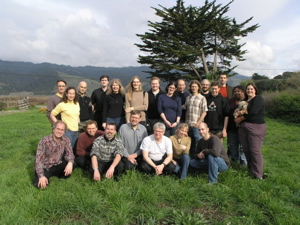
The Internet Archive San Francisco:
The Internet Archive is a 501(c)(3) non-profit that was founded to build an Internet library. Its purposes include offering permanent access for researchers, historians, scholars, people with disabilities, and the general public to historical collections that exist in digital format. Founded in 1996 and located in San Francisco, the Archive has been receiving data donations from Alexa Internet and others. In late 1999, the organization started to grow to include more well-rounded collections.
Now the Internet Archive includes texts, audio, moving images, and software as well as archived web pages in our collections, and is working to provide specialized services relating to training, education, or adaptive reading or information access needs of blind or other persons with disabilities.
Extraordinary Personalities Reflect On The Bhagavad-Gita: > HERE <
Albert Einstein, Mahatma Gandhi, Dr. Albert Schweizer, Aurobindo, Carl Jung, Prime Minister Nehru, Herman Hesse, Vivekananda, Ralph Waldo Emerson, Paramahamsa Yogananda, Rudolph Steiner, Adi Shankara, Aldous Huxley, Ramanuja, Bhaktisiddhanta Saraswati Srila Prabhupada, Baladeva Vidyabhusana, Madhvacarya, and Sri Caitanya Mahaprabhu.
Bhaja Govindam is a very popular 8th century Hindu devotional composition in Sanskrit composed by Adi Shankaracharya. This work of Adi Shankara underscores the view that devotion to God, Govinda, is a vastly important part of general spirituality. This work is generally considered a good summary of Advaita Vedanta.
It is said that Shankara was walking along a street in Varanasi one day, accompanied by his disciples. He heard an old scholar teaching his grammatical rules. Taking pity on him, he went up and advised him not to waste his time on grammar at his age but to turn his mind to God in worship and adoration. The Hymn to Govinda was composed on this occasion. Besides the refrain of the song beginning with the words „Bhaja Govindam“, Shankara is said to have sung twelve verses, hence the hymn bears the title „Dvadasamanjarika-Stotra“ (A hymn which is a bunch of twelve verse-blossoms). The fourteen disciples who were with the Master then are believed to have added one verse each. These fourteen verses are together called „Chaturdasa-manjarika-Stotra“ (A hymn which is a bunch of fourteen verse-blossoms).
The refrain „Bhaja Govindam“ which defines the composition and gives it its name invokes the almighty in the aspect of Vishnu; it is therefore very popular not only with Sri Adi Shankaracharya’s immediate followers, the Smarthas, but also with Vaishnavas and others. There is a story attached to the composition of this Hymn. Please Note: Being a lady > M.S.Subbalakshmi < omitted few verse which are not included in this application.
LORD SIVA AND HIS WORSHIP BY SRI SWAMI SIVANANDA:
AIVS – UPCOMING EVENTS 2010

> AIVS American Vedic Studies <
> BAVA British Association of Vedic Studies <
Upcoming Programs – 2010
1.) Feb. 13-15: Sivananda Ashram, Nassau, Bahamas – Yoga, Ayurveda and Tantra: How to Bring the Deity into Your Sadhana
2.) Feb. 16-19: Journey Into Healing, Phoenix, Arizona, with Deepak Chopra and David Simon – Ayurvedic Psychology for Journey into Healing
3.) April 15-18: NAMA (National Ayurvedic Medical Association) conference: Ayurveda Complimentary Global Medicine (Tantra and Ayurveda, Vamadeva and Shambhavi are both featured speakers)
4.) April 22-26: British Association of Vedic Astrology (BAVA) – Ayurvedic Astrology, the Vedic astrology of Healing, for BAVA yearly national conference
> Dein Ayurveda Net …..”Ayurveda” <
> Dein Ayurveda Net …..”Jyotish” <
> Meet Ayurveda Friends, Groups, Studies at facebook <
> Meet Lord Dhanwantri, friends, studies at facebook <
> Meet Swami SIVANANDA friends, yoga, studies, at facebook <
> Meet Yogini Dharma, AIVS friends, studies at facebook <
> Meet Yogi Baba Prem, AIVS, studies atf facebook <
> Meet VASTU, Friends, and Study Groups at facebook <
> Meet Jyotish, Friends, and Study Groups at facebook <
> Meet saundalryalahari:Wave of Beauty, Bliss, Studies, friends at fb <
> Meet Jaya Kula and the three ways of Practicing tantra at fb <